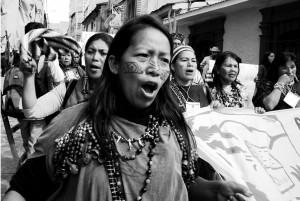Shipping Containers Converted to Vancouver Social Housing
The project that’s slated to be completed by next April was developed by the Atira Women’s Resource society, which bought a lot in 2009 to build traditional housing.
Read more: Shipping Containers Converted to Vancouver Social Housing
ISSA Proceedings 2006 ~ Pragma-Dialectics And The Function Of Argumentation
 1. Introduction: Pragma-Dialectics and the Aims of this Paper
1. Introduction: Pragma-Dialectics and the Aims of this Paper
During the last 25 years Frans van Eemeren and Rob Grootendorst have very impressively developed Pragma-Dialectics, i.e. a consensualistic theory of argumentative discourse, which sees the elimination of a difference of opinion as the aim of such discourses and of argumentation. Currently this is the most famous and most discussed approach in argumentation theory in the world.
In what follows I will discuss Pragma-Dialcetics mainly from an epistemological standpoint, i.e. what this theory has to tell us with respect to acquiring true or justified beliefs and knowledge.
Technical note: The discussion rules are the constructional core of Pragma-Dialectics; in addition to a few material changes and to stylistic improvements, these rules have undergone a change in numbering. In this text I will refer to their first English version (E&G 1984, p. 151-175) as “Ro1” etc. (“original (or old) rule no. 1”) and to their most recent statement (E&G 2004, pp. 135-157) as “Rs1” etc. (“Rule in ‘Systematic Theory of Argumentation’ no. 1”). The material changes regard, first, the possibilities of defending (or attacking) a premise (Ro9/Rs7 (E&G 1984, p. 168; 2004, p. 147 f.)); the originally included possibility of common observation has been deleted – which is surprising – and the originally lacking possibility of argumentatively defending a premise included, which is a clear improvement. The second and most important change concerns the argument schemes that may be used for defending a claim: originally only deductive arguments were permitted now non-deductive argument schemes have been added (Ro10/Rs8 (E&G 1984, p. 169; 2004, p. 150)) – a substantial improvement. The following discussion usually refers only to the best version.
2. The Aim of Argumentation and Argumentative Discourse: Elimination of a Difference of Opinion
The whole approach of Pragma-Dialectics is constructed starting from one central theorem about the function of argumentative discourse and argumentation in general. The aim of argumentative discourse and of argumentation, as these are seen and constructed by Pragma-Dialectics, is to eliminate a difference of (expressed) opinion (e.g. E&G 1984, p. 1; 1992, xiii; p. 10; 2004, pp. 52; 57; Eemeren et al. 1996, p. 277) or to resolve a dispute – where “dispute” is understood as: expressed difference of opinion (e.g. E&G 1984, pp. 2; 3; 151). This resolution has taken place if the participants both explicitly agree about the opinion in question. The central task of the theory is to develop rules for rational discussions or discourses; and the value of the rules to be developed is regarded as being identical to the extent to which these rules help to attain the goal of resolving disputes (E&G 1984, pp. 151; 152; cf. 2004, pp. 132-134).
This, obviously, is a consensualistic conception of argumentative discourse and of argumentation, which aims at an unqualified consensus, i.e. a consensus that is not subjected to further conditions.[i] Consensualism defines a clear aim for argumentation and argumentative discourse, which can be the basis for developing a complete argumentation theory, including criteria for good argumentation, good discourse, theory of fallacies, theory of argumentation interpretation, etc. Thus, consensus theory in general, and Pragma-Dialectics in particular, is a full-fledged approach to argumentation theory. Similar and competing full-fledged approaches are, first, the rhetorical approach, which sees convincing an addressee, i.e. creating or raising an addressee’s belief in a thesis, as the aim of argumentation (e.g. Perelman & Olbrechts-Tyteca 1958; Hamblin 1970; Tindale 2004), and, second, the epistemological approach, which sees generating the addressee’s justified belief in the argumentation’s thesis as the standard function of argumentation (e.g. Biro & Siegel 1992,; Feldman 1994; Goldman 1999, ch. 5; Johnson 2000; Lumer 1990; 1991; 2005/2006; Siegel & Biro 1997). As opposed to epistemological theories, both consensus theory and rhetoric aim at an unqualified belief (though in Pragma-Dialectics this is more an expression of a belief than the belief itself); but consensus theory then, unlike rhetoric, requires that both participants share this opinion. Read more
South Africa’s ‘Insidious’ Housing Problems Happening in Britain
The Guardian – Lindela Figlan. In the world’s second most unequal country, South Africa, millions like me live in informal settlements without toilets, water or electricity – never mind decent shelter.
To fight against this we founded Abahlali baseMjondolo, which roughly translates as “the people of the shacks” to resist illegal evictions and campaign for the right to housing for all.
Visiting the UK, I have understood the same insidious denial of this right is also happening in Britain. My trip has highlighted our common struggles; how much the UK can learn from what is happening in South Africa and the persistence and determination of our movement in the face of attempts to close us down.
Read More: South Africa’s ‘insidious’ housing problems happening in Britain
De onzichtbaarheid voorbij – De collectieve rechten van inheemse volkeren in Peru en Bolivia – I
Inleiding
Wie in Nederland aan Peru en Bolivia denkt, ziet de typische beelden voor zich van inheemse vrouwen met twee vlechten, kleurige rokken, en een hoed op het hoofd. Hoewel inderdaad in beide landen een groot deel van de bevolking inheems is, zijn deze mannen en vrouwen eeuwenlang onzichtbaar geweest op het politieke toneel. Dankzij de toegenomen aandacht voor de inheemse rechten op internationaal niveau en de versterking van de inheemse organisaties van onderaf, hebben de inheemse volkeren een steeds grotere rol in nationale processen verkregen. Opgenomen worden in de bestaande structuren is echter niet genoeg. De inheemse volkeren bevorderen nieuwe processen om vanuit hun eigen culturele en etnische diversiteit mee te kunnen besluiten. Zij willen geen van buitenaf opgelegde ontwikkelingsmodellen aannemen, maar zelf hun Buen Vivir(i)bepalen. Op deze manier dragen de inheemse volkeren bij aan een nieuwe uitleg van concepten als natiestaat, democratie en burgerschap. Read more
De onzichtbaarheid voorbij – De collectieve rechten van inheemse volkeren in Peru en Bolivia – Deel II
4. Peru: de strijd om burgerschap
Peru heeft de afgelopen jaren prachtige economische groeicijfers gepresenteerd, maar daar heeft het grootste deel van de bevolking weinig van gemerkt. Het economische beleid is vooral gestoeld op het snel verkopen van de vele grondstoffen die het land rijk is en heeft daarbij weinig oog voor mens noch milieu. Met name de multinationale mijnbouw- en petroleumbedrijven zorgen voor een snel toenemend aantal conflicten.
In dit hoofdstuk benoem ik een aantal factoren die de specifieke situatie van Peru tekenen. Om te beginnen heeft Peru veel meer inwoners dan Bolivia, namelijk ruim 28 miljoen, waarvan rond de 9 miljoen (34,41 procent) onderdeel uit maken van de inheemse volkeren. De grootste groep inheemsen zijn de Quechua’s, verspreid over de Andesgebieden, die in Peru de Sierra genoemd worden. Vervolgens komen de Aymara’s, die hun gemeenschappen op de hoogvlaktes rond het Titicacameer hebben. In de Amazone wonen maar liefst 65 verschillende inheemse volkeren, waarvan minstens elf in gekozen afzondering of met zeer weinig extern contact. De meest bekende Amazonevolkeren zijn de Ashanínka’s, Awajún en Matsiguenga’s (caoi 2008b; UNIFEM 2008:35). Naast de inheemse volkeren vormen de zogenaamde Afroperuanos, afstammelingen van Afrikaanse slaven, ook een aanzienlijk deel van de Peruaanse bevolking.
Bijna een derde van de bevolking woont in Lima, en het lijkt soms alsof Peru dáár voor de politici, de economische elite en de media ophoudt. Zij leven in Lima met hun rug naar de Andes en de Amazone en hebben weinig interesse voor wat er in de rest van het land gebeurt.
Praxis Discussion Series: Urbanization
What’s driving urbanisation? How can we make our cities more inclusive? What does resilient, sustainable urbanisation look like, globally, in Asia, and in the Pacific? This is a discussion with four leading experts: Max Kep from Papua New Guinea’s Office of Urbanisation; Professor John Connell from the University of Sydney; Truman Packard, World Bank and Simon Cramp, AusAID




